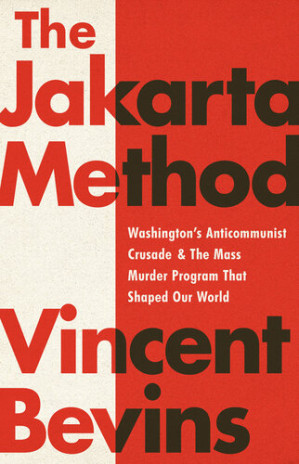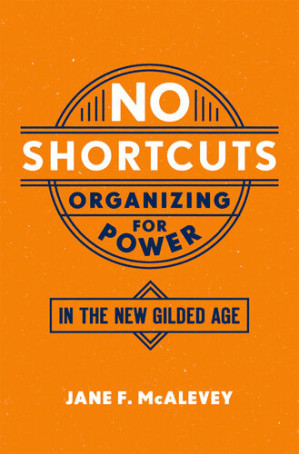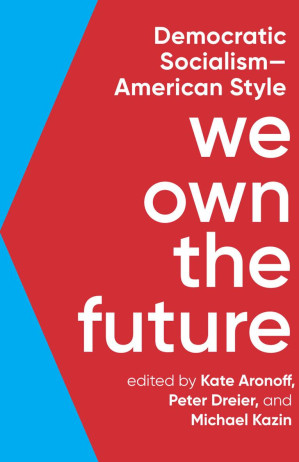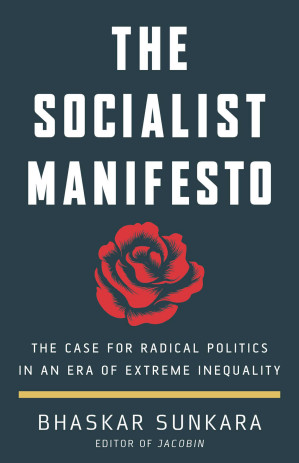The Jakarta Method was a systematic blueprint for eliminating leftist movements through mass violence.
What happened in Indonesia was not an isolated tragedy but a model that would be exported across the Global South.

Book summary
by Vincent Bevins
Washington's Anticommunist Crusade and the Mass Murder Program That Shaped Our World
A global history of U.S.-backed anti-communist massacres and the blueprint for repression in the service of capital.
Topics
Note the patterns of how capital, media, and military forces reacted to democratic socialist experiments, then use Readever to contrast those reactions with today's media coverage of socialist movements. Focus on understanding the systematic nature of the violence and how it shaped the political possibilities available today.
Things to know before reading
Vincent Bevins documents the systematic slaughter of leftist movements across the Global South during the Cold War, revealing how U.S.-backed anti-communist violence created the neoliberal world order we inhabit today.
Bevins reveals that the Cold War was not just an ideological conflict but a systematic campaign of mass violence that eliminated democratic socialist alternatives across the Global South.
What happened in Indonesia was not an isolated tragedy but a model that would be exported across the Global South.
The fight against communism was often a fight against economic sovereignty and democratic control over resources.
The world we live in today was built on the graves of millions of socialists, communists, and leftists.
The killings were often portrayed as necessary measures against dangerous extremists, not as the mass murder of political opponents.
The ghosts of the murdered continue to haunt our political imagination, limiting what we believe is possible.
Ready to continue? Launch the Readever reader and keep turning pages without paying a cent.

Howard Zinn
History from the perspective of America's working people, women, and minorities

Manning Marable
Pathbreaking analysis of racism and capitalism in America

Bernie Sanders
A program for building a democracy that finally works for everyone
This summary gives you Bevins's devastating account of how U.S.-backed mass murder campaigns eliminated democratic socialist alternatives across the Global South, paving the way for neoliberal capitalism. You'll learn the hidden history behind today's global economic order and gain crucial context for understanding contemporary resistance to capital.
Key idea 1
What happened in Indonesia was not an isolated tragedy but a model that would be exported across the Global South.
Bevins documents how the 1965-66 Indonesian mass killings, which eliminated the world's third-largest communist party, became a template for anti-communist violence worldwide. U.S. and allied intelligence agencies studied, supported, and sometimes directly participated in these campaigns, creating a playbook for eliminating leftist movements through systematic violence, propaganda, and political manipulation.
Remember
Key idea 2
The fight against communism was often a fight against economic sovereignty and democratic control over resources.
Bevins argues that anti-communist ideology frequently served to justify interventions that protected Western corporate interests and prevented countries from pursuing independent economic development. The elimination of leftist movements opened countries to foreign investment, resource extraction, and integration into a global capitalist system that benefited Western corporations at the expense of local populations.
Remember
Key idea 3
The world we live in today was built on the graves of millions of socialists, communists, and leftists.
Bevins demonstrates that the neoliberal global order that emerged in the 1980s and 1990s was made possible by the systematic elimination of socialist alternatives during the Cold War. By destroying leftist movements and installing compliant regimes, the violence created the political space for free-market policies, privatization, and the dismantling of social welfare systems across the Global South.
Remember
Key idea 4
The killings were often portrayed as necessary measures against dangerous extremists, not as the mass murder of political opponents.
Bevins shows how Western media frequently collaborated with government narratives that portrayed anti-communist violence as necessary for stability and progress. This propaganda helped obscure the scale of the violence, demonize the victims, and create public acceptance for interventions that served elite interests. The media framing often persists today, shaping how we understand these historical events.
Remember
Key idea 5
The ghosts of the murdered continue to haunt our political imagination, limiting what we believe is possible.
Bevins argues that the systematic elimination of leftist alternatives during the Cold War created a political landscape where socialist and communist ideas are often seen as dangerous or impossible. This historical trauma continues to shape political possibilities today, making it difficult to imagine alternatives to capitalism and limiting the scope of acceptable political discourse.
Remember
The Jakarta Method represents years of investigative journalism and historical research by former Financial Times and Los Angeles Times correspondent Vincent Bevins. The book traces the global spread of anti-communist violence from its origins in Indonesia's 1965-66 massacres to similar campaigns across Latin America, Africa, and Asia.
Bevins documents how U.S. and allied intelligence agencies developed, supported, and sometimes directly participated in campaigns of mass violence that eliminated leftist movements and installed authoritarian regimes friendly to Western interests. The book shows how these campaigns were not isolated incidents but part of a coordinated global strategy to eliminate socialist alternatives and create a world safe for capitalist expansion.
Through archival research and interviews with survivors, Bevins reconstructs this hidden history and shows how it shaped the world we live in today. The book challenges conventional narratives about the Cold War and reveals the violent foundations of the contemporary global economic order.
Open Readever's reader to highlight passages, ask the AI companion questions, and keep exploring without paying a cent.
The Jakarta Method is a groundbreaking work of investigative journalism and historical scholarship that fundamentally reshapes our understanding of the Cold War and its legacy. Bevins combines meticulous research with powerful storytelling to document one of the most important and underreported stories of the 20th century.
The book's greatest strength is its global scope and systematic analysis. By tracing connections between seemingly disparate events across multiple continents, Bevins reveals patterns that have been obscured by national histories and Cold War propaganda. His journalistic background serves him well, as he presents complex historical material in accessible prose while maintaining scholarly rigor.
Some critics note that the book's focus on U.S. involvement sometimes overshadows local actors and dynamics. However, Bevins is careful to show how external intervention interacted with internal political conflicts. The book's emotional power comes from its combination of macro-level analysis with individual stories of survival and resistance.
The Jakarta Method has been widely praised for its importance in recovering this hidden history and for its relevance to understanding contemporary global politics. It stands as an essential corrective to conventional Cold War narratives and a powerful account of how violence shaped our world.
Students and scholars of Cold War history and international relations
Activists and organizers interested in the history of anti-capitalist movements
Anyone seeking to understand the origins of today's global economic system
Journalists and writers covering geopolitics and economic justice
People interested in the relationship between violence and political possibility
Vincent Bevins is an award-winning journalist and author who has reported from more than fifty countries. He served as the Brazil correspondent for the Los Angeles Times and the Indonesia correspondent for the Financial Times, covering major stories across Southeast Asia and Latin America.
Bevins's reporting has appeared in The New York Times, The Washington Post, The Guardian, and many other publications. His work has focused on political violence, social movements, and the hidden histories that shape contemporary global politics. The Jakarta Method represents the culmination of years of investigative work across multiple continents.
Born in California and educated at Georgetown University, Bevins brings both academic training and extensive field experience to his work. His unique perspective as a journalist who has lived and worked in many of the countries he writes about gives his analysis both depth and immediacy. The Jakarta Method has established him as a leading voice in the critical reexamination of Cold War history.

Angela Y. Davis
Ferguson, Palestine, and the foundations of a movement

Kate Aronoff, Peter Dreier, Michael Kazin
Democratic socialism, American style

Bhaskar Sunkara
A clear-eyed introduction to socialism's history and future possibilities
Build your personalized reading stack
Download full-length ePubs in one click with personal cloud storage.
Blend AI-guided insights with tactile note-taking to accelerate reflection.
Follow curated reading journeys tailored to your goals and time budget.
Sync highlights across devices so lessons stick beyond the page.
Sign in to Readever to keep reading with AI guidance, instant summaries, and synced notes.
The Jakarta Method provides a devastating account of how systematic violence eliminated socialist alternatives across the Global South during the Cold War, creating the political conditions for neoliberal globalization. Bevins shows that this violence was not incidental but central to the creation of the contemporary global economic order.
The book's most important contribution is its demonstration that the world we live in today was shaped by mass political violence that has been largely erased from public memory. By recovering this history, Bevins helps us understand the limits of contemporary political imagination and the violent foundations of our economic system.
While the story Bevins tells is horrifying, it is also essential for anyone seeking to build a more just world. Understanding how socialist alternatives were systematically eliminated helps us see the possibilities that were foreclosed and imagine new paths forward. The book stands as both a historical corrective and a call to remember the victims and continue their struggle.
The Jakarta Method represents a crucial intervention in how we understand the Cold War and its legacy. By documenting the systematic nature of anti-communist violence across the Global South, Bevins challenges the conventional narrative of the Cold War as primarily an ideological conflict between democracy and communism.
What makes Bevins's account particularly powerful is his demonstration that this violence was not random or incidental but followed a clear pattern and served specific economic interests. The elimination of leftist movements opened countries to foreign investment, resource extraction, and integration into a global capitalist system that benefited Western corporations. This helps explain why anti-communist ideology often served as cover for interventions that had little to do with democracy and everything to do with economic control.
The book's global scope is also essential. By tracing connections between events in Indonesia, Brazil, Chile, and other countries, Bevins shows that these were not isolated incidents but part of a coordinated global strategy. This systematic analysis helps us understand the scale and coordination of the violence, which has often been obscured by national histories and Cold War propaganda.
Perhaps most importantly, The Jakarta Method helps explain the political limitations of our contemporary moment. By showing how socialist alternatives were systematically eliminated, Bevins helps us understand why such alternatives seem so difficult to imagine today. The book thus serves not only as historical correction but as a crucial resource for those seeking to build new political possibilities in the shadow of this violent history.
Bevins's work stands alongside other crucial reexaminations of Cold War history, but its particular focus on the Global South and its systematic analysis of violence make it uniquely important. The book deserves to be widely read and discussed, both for its historical significance and for its relevance to contemporary struggles for economic justice and political freedom.
Start reading The Jakarta Method for free and unlock personalized book journeys with Readever.